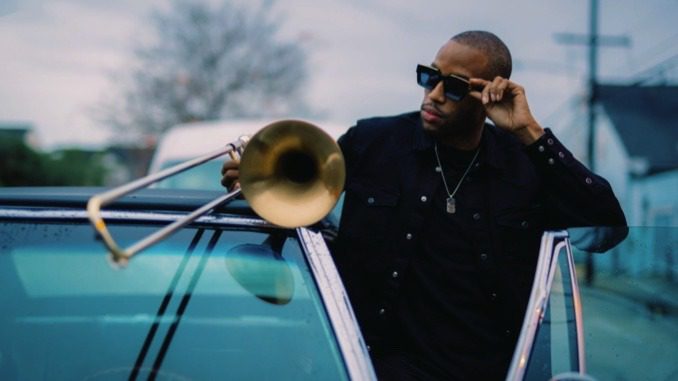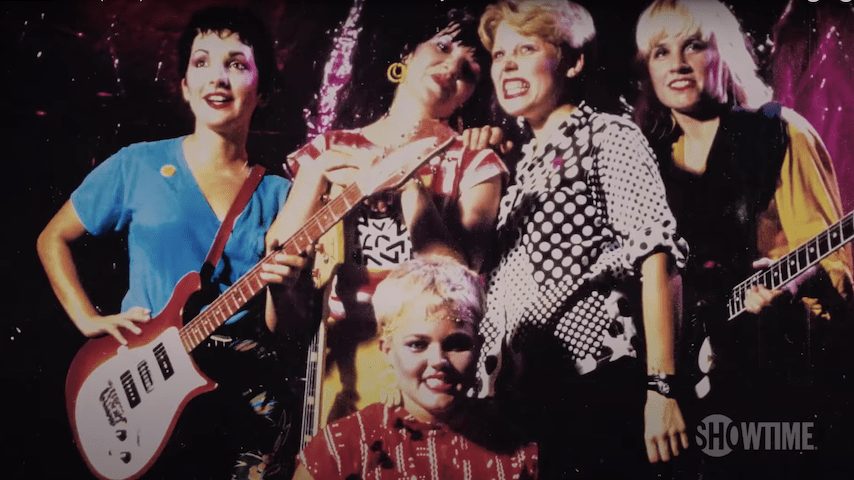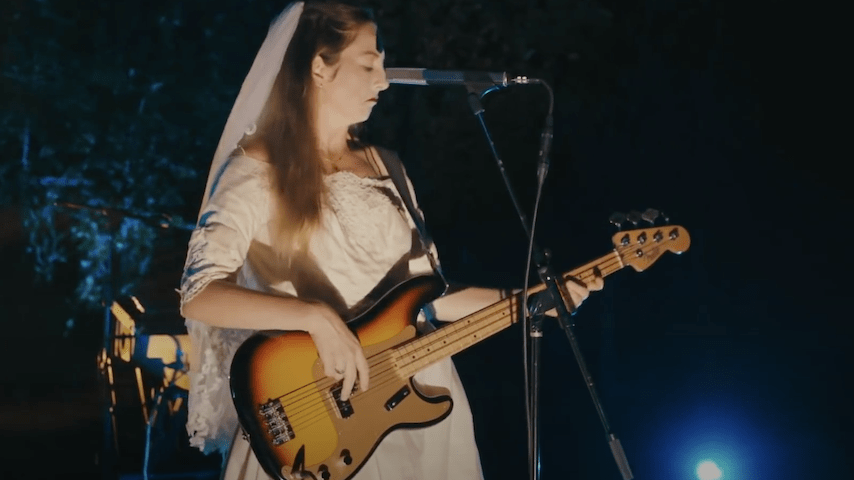History can lift you up or weigh you down. It can be a mountain to stand on or a sack of stones upon your back.
This is especially true in a town where musical history is as rich and omnipresent as it is in New Orleans. Trombone Shorty, for example, grew up as Troy Andrews in the city’s Treme neighborhood. His uncle Jessie Hill had a top-40 pop hit in 1960 with “Ooh Poo Pah Doo,” and Troy’s brother James, older by 17 years, was a well-established trumpeter known as the “Satchmo of the Ghetto.” Family friends included Dr. John, Allen Toussaint and various Nevilles.
For Troy, a natural musician who first appeared onstage at age four, this environment presented a challenge. He could carry on the tradition as those before him had done and enjoy a comfortable career. He could turn his back on that tradition and venture off in a totally different direction. Or he could gamble on mixing the tradition with new influences and pushing it forward without breaking the thread. He chose the latter.
Trombone Shorty’s new album is called Lifted. Its cover is a black-and-white photo of the musician as a young child, held up in his mother’s arms so he can be seen and heard in one of New Orleans’ frequent street parades. In the picture’s background is one of the city’s brass bands—dark suits, skinny ties and admiral caps—a personification of the rich musical history the locals couldn’t escape even if they wanted to. The young Troy is holding a miniature, white-plastic saxophone, elevated by his mom—and by history itself—but reaching for something more. How do you get that mix of history and something more just right?
The new album is just the latest chapter in Andrews’ surprisingly successful efforts to answer that question. He was wrestling with this dilemma in public when he brought his seven-act Voodoo Threauxdown, a New Orleans mini-festival, to the Artpark Amphitheater outside Buffalo earlier this month. Setting the stage for his headlining set were performances by The Soul Rebels, George Porter, Cyril Neville, Dumpstaphunk, Big Freedia, and Tank & The Bangas.
In the second half of his set, Trombone Shorty played “On Your Way Down,” first recorded in 1972 by its composer, Allen Toussaint, backed by The Meters, the foundational ensemble for New Orleans funk. That instrumental quartet (keyboardist Art Neville, bassist George Porter, guitarist Leo Nocentelli and drummer Zigaboo Modeliste) combined the Memphis soul of Booker T. & The MGs and the Georgia funk of James Brown with the push-and-pull Caribbean syncopation of Louisiana. The result was a sound that had never been heard before, but one that echoes through New Orleans music to this day.
The title comes from the chorus’ warning to every listener: “The same people you misuse on your way up you might meet up on your way down.” The song has been recorded by Lee Dorsey, Little Feat, Elvis Costello and Trombone Shorty himself, each drawn to its unusual blend of dance grooves and folk wisdom. Andrews knew he had to not only get that blend right, but he also had to add something new of his own.
At Artpark, he gave the famous bass riff to his longtime sidekick, baritone saxophonist Dan Oestreicher. That honking approach to funk linked Porter’s original electric bassline to the sound of New Orleans’ tubas. Andrews slapped a tambourine against his thigh and testified to Toussaint’s admonition like a Southern preacher, gradually adopting a hip-hop cadence. After one trip through the lyrics, Andrews picked up his namesake trombone and played a solo that lifted off from the song’s launching pad into the dizzying thin air of jazz improvisation.
This was not your usual blues-rock improvisation of playing fast and fancy over basic changes; this was jazz-informed soloing where chords mutated into extended, augmented or diminished forms. Oestreicher took a similar solo, and then Andrews switched to trumpet, proving himself as imaginative on that horn as on the slide.
Meanwhile, the groove kept pumping and the crowd kept jumping, even as the horn players (including tenor saxophonist B.K. Jackson) turned the harmonies inside out, even as the two electric guitarists (Pete Murano and Josh Connolly) added a rock ‘n’ roll sizzle to the proceedings. And just when they’d gone out as far as they could without losing the groove and the crowd, the band snapped back to the funk and the lyrics.
It was a remarkable moment, for it demonstrated how musical history can be updated by addition rather than substitution. You don’t have to get rid of what made the music great in the first place; you can add new layers and digressions to it. Even after half a century, New Orleans funk can be given new life with splashes of hip-hop, jazz and rock ‘n’ roll. Trombone Shorty applied this same methodology to the songs he had written himself, including “Lifted,” “I’m Standing Here,” “Come Back” and “Might Not Make It Home” from the new album.
Most of these are love and/or lust songs, but “I’m Standing Here” aimed for the same kind of street philosophy as “On Your Way Down.” Andrews acknowledged these troubled times by half-singing, half-rapping over a hard-rock stomp: “Can’t fall asleep without grinding my teeth / I’m sweating bullets; bullets are sweating me.” But the chorus declares, “I’m standing here, and I’m ready, have no fear.” And to make it clear that this is no simple platitude, the chorus was followed by guitar and horn solos as complicated as survival itself.
If you hoped that the end of the pandemic might usher in a revival of acoustic instruments, you probably didn’t think that a trombone would be leading the way. After all, never in living memory has there been a successful pop band led by a trombonist, and even trombone-led jazz bands are rarer these days. But Andrews, as tall and slender as the instrument, used the slide to bend notes like a guitarist and used the braying tone to add funky, even lascivious colors to the melody. And he handled the slide’s stabbing motion like a dueling swordsman to reinforce the music’s aggression.
He was a striking figure on the Artpark stage, his long, lean legs in tight black slacks, a black-and-white print shirt and wraparound shades. You might ask how someone of such height got a name like Trombone Shorty. Well, back when he started playing before entering first grade, his instrument was taller than he was. And he’s so thin that Aaron Neville dubbed Andrews “Trumpet Slim” after hearing him with his other horn at the 2002 New Orleans Jazz & Heritage Festival.
The horns make the connection between jazz and New Orleans funk almost inevitable. If you grow up playing trumpet, trombone or sax in that city, you will find yourself in both traditional and modern jazz combos, forced to not only keep up with the ambitious changes but to also solo over them. You will probably end up attending the local arts high school, the New Orleans Center for the Creative Arts, as Andrews did, and absorb more music theory than you could ever get in the clubs. You will have all the tools to solve the age-old riddle: How can one make jazz danceable again?
Trombone Shorty isn’t the only one working on this problem. The Soul Rebels have been the best New Orleans brass band of this century so far, pulling the city’s funk and jazz currents together almost as compellingly as Andrews. The octet follows the brass band template: two drummers, two trumpeters, two trombonists, a saxophonist and a tuba player. They kicked off the Voodoo Threauxdown festivities with a short opening set.
They got the dancers going with their hip-shaking groove and hip-hop party chants, and once that momentum was established, the horn players could veer off into adventurous jazz solos. It was the best of both worlds. They climaxed the set with “Work It Out,” which featured not only hot solos, but also collective improvisation—the horns jousting with each other in counterpoint delirium.
Next up were Tank and The Bangas, also from New Orleans. The band’s update of the city’s musical legacy downplays funk and jazz in favor of Tarriona “Tank” Ball’s clever wordplay—part-poetry, part-hip-hop, part-art-rock. Her backing musicians, meanwhile, turn the slow songs into smooth jazz and the fast songs into prog-rock.
The group exhibited their versatility when they invited Big Freedia to join them onstage. The city’s most prominent bounce artist, Freedia’s barking phrasing drove the muscular groove as much as the drums or bass. When Freedia and Tank reprised their recorded collaboration, “Big,” the former singer’s justified boast, “I got the juice to make the girls wanna move,” demonstrated another way to update Crescent City history for the hip-hop age.
That history was on display when Dumpstaphunk hosted a tribute to The Meters in the evening’s second set. The New Orleans funk septet is led by keyboardist Ivan Neville (Aaron Neville’s son) and features guitarist Ian Neville (Art Neville’s son). For their Voodoo Threauxdown show, they were joined by original Meter George Porter and almost-original Meter Cyril Neville (the younger brother of Aaron and Art who joined the Meters when they expanded to a quintet).
The second number in the set was “Cissy Strut,” the irresistible instrumental that became The Meters’ biggest hit in 1969 (#23 pop). It was just as compelling this year, especially when Porter, sitting on a barstool in a purple, tie-dye T-shirt and graying ponytail, fast-fingered his way through the popping, propulsive bass line. Porter sang lead on 1974’s “Just Kissed My Baby,” before Cyril Neville came out in a black fedora to sing lead on one of the best protest songs New Orleans has ever produced: “No More Okey Doke.” With Porter playing the melodic bass line over the Dumpstaphunk rhythm section and the horns punching out riffs, Cyril sang, “Things have changed and it ain’t no joke. No more okey doke.”
Dumpstaphunk closed out its set with Ivan Neville singing “Fire on the Bayou,” as he leaned into the swelling organ chords and Porter interjected snatches of The Doors’ “Light My Fire” and The ReBirth Brass Band’s “Do Whatcha Wanna.” “Fire on the Bayou” holds a special place in musical history, for it was the title not only of The Meters’ sixth studio album, but also the second studio album by the Neville Brothers, after Art and Cyril left The Meters to join their siblings Aaron and Charles in that family band. With its apocalyptic tone and Louisiana setting, it remains a New Orleans standard to this day.
While The Meters were creating some of the finest funk music ever recorded in the early ’70s, the band’s guitarist and primary songwriter Leo Nocentelli was working on a solo project that featured him playing nylon-string guitar on the kind of country-folk, singer/songwriter material that later became known as Americana. Backed by Porter, Modeliste, Toussaint and drummer James Black, Nocentelli had crafted a beguiling mix of acoustic instruments, pastoral melodies and second-line syncopation.
The album was never released and was presumed lost when Hurricane Katrina flooded Toussaint’s Sea-Saint Studios in 2005. No one was more surprised than Nocentelli himself when the reel-to-reel tapes were discovered at a flea market in Gardena, California, in 2018. Those tapes have finally been released by Light in the Attic Records as Another Side, featuring nine catchy Nocentelli originals and Elton John’s “Your Song.” It’s a delightful example of the detours that Louisiana music can take.
This writer made his own welcome discovery in May. At this year’s Delfest in western Maryland over the Memorial Day weekend, most of the acts were string bands like the legendary bluegrass band led by the festival’s namesake, Del McCoury. The most notable exception was The California Honeydrops, a Bay Area quintet that has pulled off the best West Coast adaptation of Louisiana music since Little Feat and Creedence Clearwater Revival.
The Honeydrops’ connection to McCoury was the Californians’ lead singer, Warsaw native Lech Wierzynski, who wrote a song, “Other Shore,” for McCoury’s new album, Almost Proud. Wierzynski is not only a fine songwriter (Bonnie Raitt picked another of his songs for her new album), but also a powerful high tenor, and a solid guitarist and trumpeter. But despite his origins in Poland and Oakland, Wierzynski has devoted himself to the sound of New Orleans R&B. And he does it as exuberantly and infectiously as any outsider ever has.
He gets a lot of help from his bandmates: drummer Ben Malament, saxophonist Johnny Bones, bassist Beaumont Bradbury and pianist Lorenzo Loera. Onstage they are often joined by a second saxophonist and conga drummer, and when Wierzynski joins them on trumpet, the three horns play those street-parade riffs and hot solos over the second-line rhythms, and soon the crowd is jumping to the beat.
It’s just one more example of the ways Louisiana’s storied music is not ready for the museum case quite yet. It continues to mutate and morph into new and exciting forms without ever losing its thread to the past. Trombone Shorty is deservedly the figurehead of this renaissance, but The Soul Rebels, Dumpstaphunk, Leo Nocentelli and The California Honeydrops deserve a golden coconut from the Zulu Krewe’s Mardi Gras parade, too.




